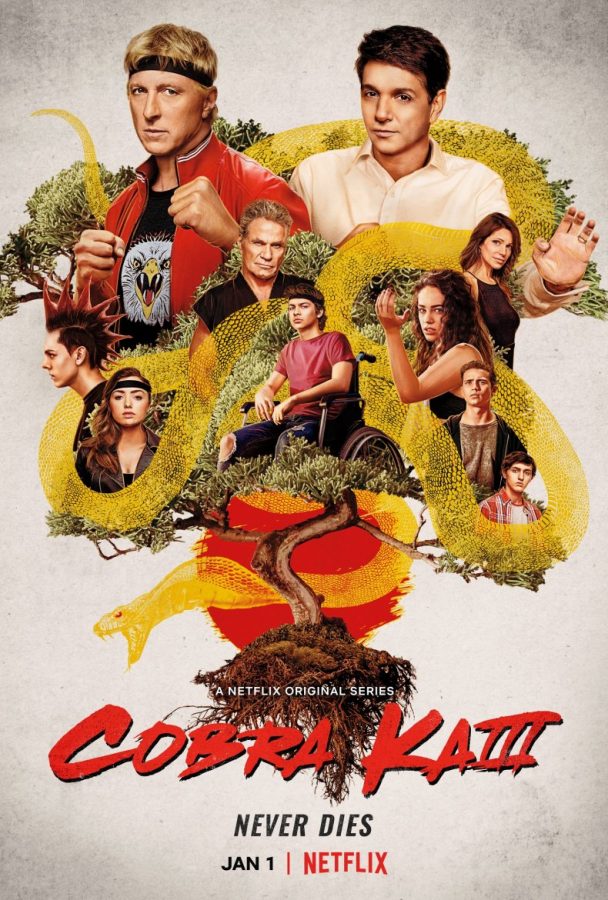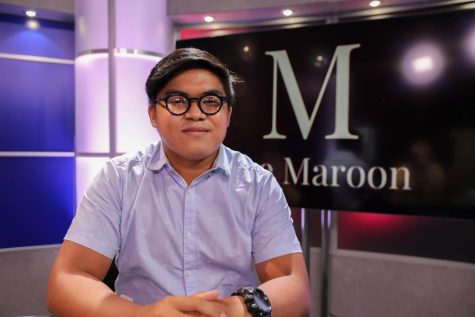“Cobra Kai” season three review: Flawed but entertaining nostalgia trip
March 7, 2021
Editor’s Note: The following review has spoilers for “Cobra Kai.”
“Cobra Kai” moves to Netflix for its third season, and for good reason. The show has become a runaway hit since it first aired on YouTube Red in 2018. It flips the script of the 1984 film “The Karate Kid” by focusing on its antagonist Johnny Lawrence, played by William Zabka.
Nostalgia for the film in particular, and 80s culture in general, is the name of the game. It may come with its own share of cheese, but creators Josh Heald, Jon Hurwitz, and Hayden Schlossberg skillfully use the show’s nostalgia factor to weave an entertainingly brilliant exploration of its several characters. Season three in particular brings this distinctive brand of storytelling to new heights, even if it can be slow and contrived at times.
The show begins with the aftermath of the school brawl in the season two finale. Daniel LaRusso’s (Ralph Macchio) Miyagi-Do karate dojo suffers casualties. His daughter Sam (Mary Mouser) lives in fear of her vengeful rival Tory (Peyton List), a member of Johnny’s Cobra Kai dojo. Meanwhile, LaRusso’s other student and Johnny’s estranged son Robby (Tanner Buchanan) is on the run after kicking his rival Miguel (Xolo Maridueña) over a guardrail, putting him into a coma.
The battle royale on campus is in some way a summation of Daniel and Johnny’s long-running feud, which intensified after the former won the All-Valley Karate Tournament in the original film. Now their rivalry is complicated by the arrival of Johnny’s old sensei Kreese (Martin Kove), a former Vietnam War veteran. The sociopathic Kreese takes over Cobra Kai from Johnny and imparts his gung-ho approach to karate to his students.
One of the main strengths of “Cobra Kai” has always been its characters, who have intricate motivations that basically make the viewer root for Daniel, for example, in one minute and then loathe him the next. In fact, this season’s origin story comes from Kreese and how he made Cobra Kai. He may be a loathsome character, but the viewer cannot help but begrudgingly empathize with how he came to be the way he is now.
With the show juggling several storylines, its pacing inevitably leaves a lot to be desired. There’s a lot of side excursions that should be exciting, like Daniel’s visit to Okinawa, his late mentor Mr. Miyagi’s (Pat Morita) hometown. But they ultimately slow the plot down, in the case of the warring dojos bumping into each other from time to time. Their occasional skirmishes become petty and annoying, at which point the viewer is forced to bide his time before the next big battle.
Thankfully, the latter half of the season makes up for its sluggish pacing. For all its faults, “Cobra Kai” excels in inducing excitement and anticipation. There’s always the prevailing feeling of bigger things to come every season, and season three is no different. In this case, the show handles its fighting scenes very well. Without spoiling everything, season three’s big climax is one of the best scenes of the series, which replicates the intensity of the school brawl yet skillfully balances its own pacing.
Netflix has already renewed “Cobra Kai” for a fourth season, which can either be a blessing or a curse. The show is undeniably bigger now than when it first aired, from setting up Johnny’s redemption arc into creating “the whole mortal enemy/karate dojo/battle for the soul of the Valley thing,” as Daniel’s wife Amanda (Courtney Henggeler) derisively points out. But “Cobra Kai” has always shown its willingness to adapt, overcome and become better every season. While not without its flaws, the show is still learning, much like its wearied protagonist Johnny adapting to the ways of the millennial world.









